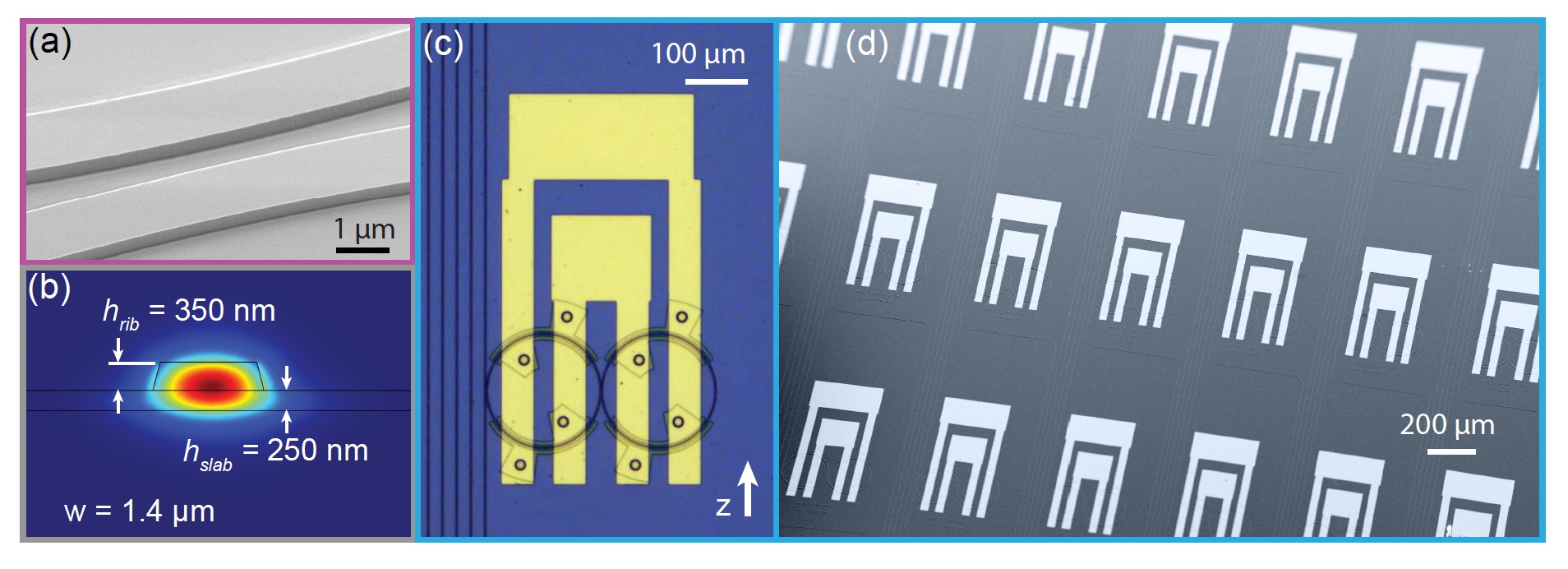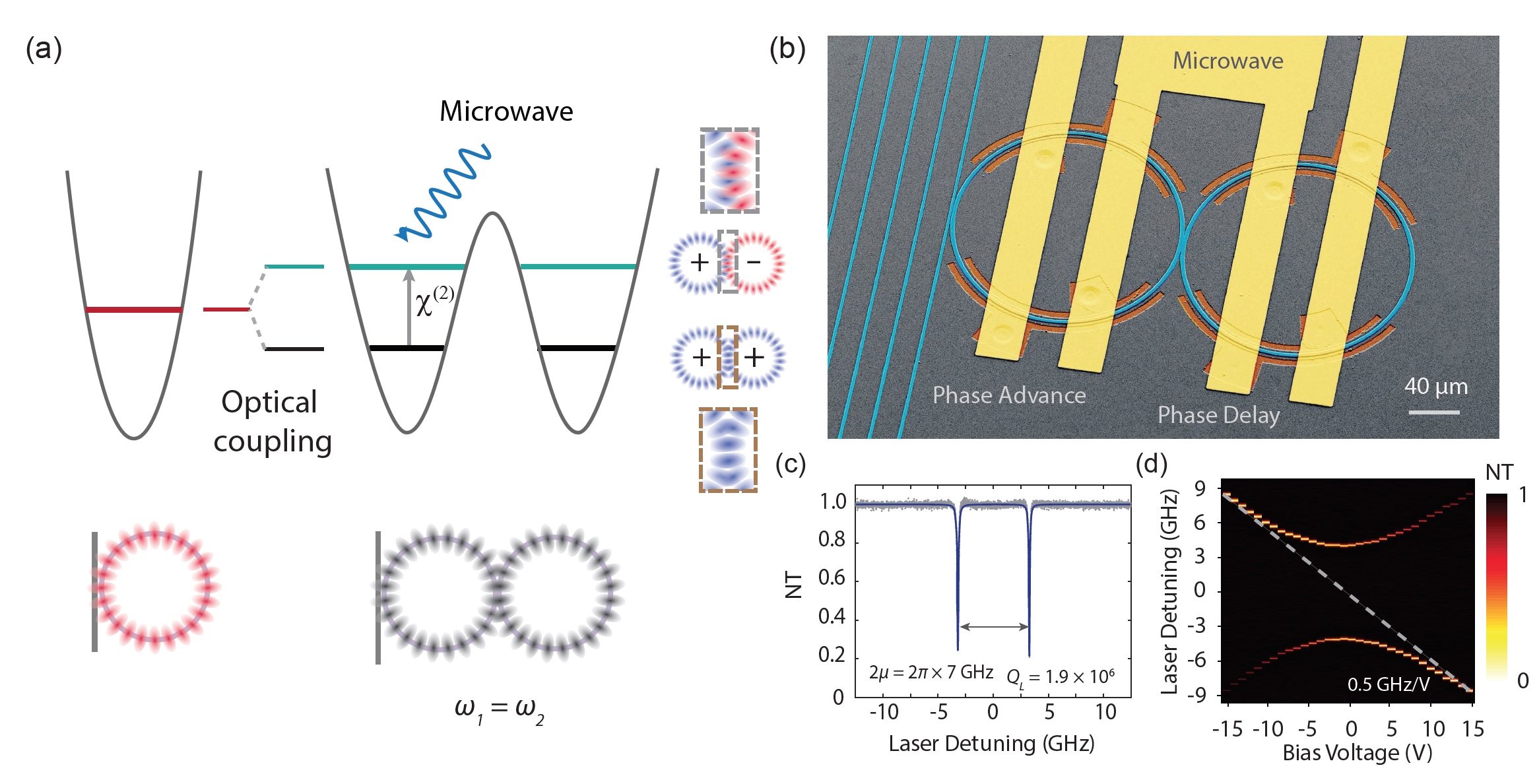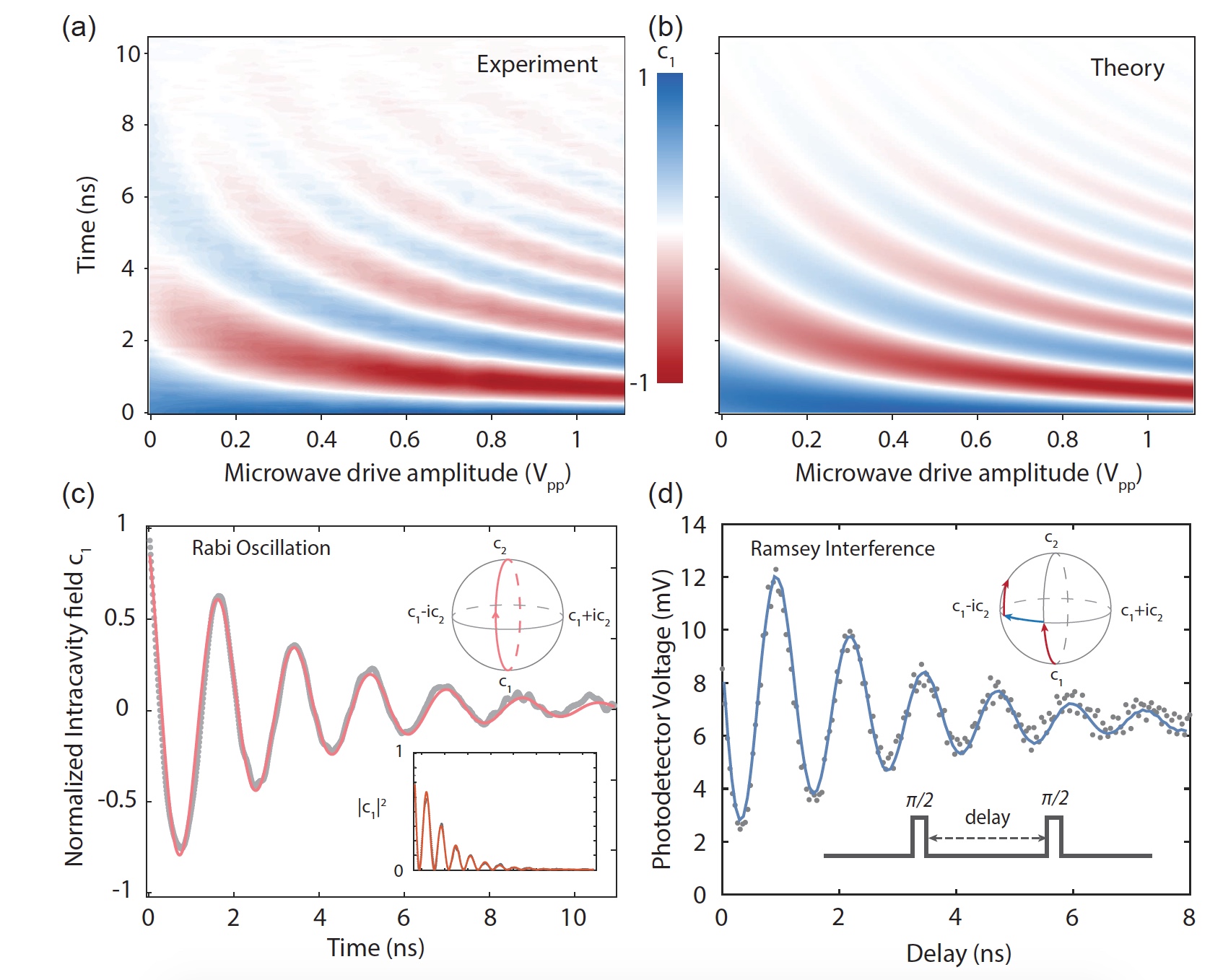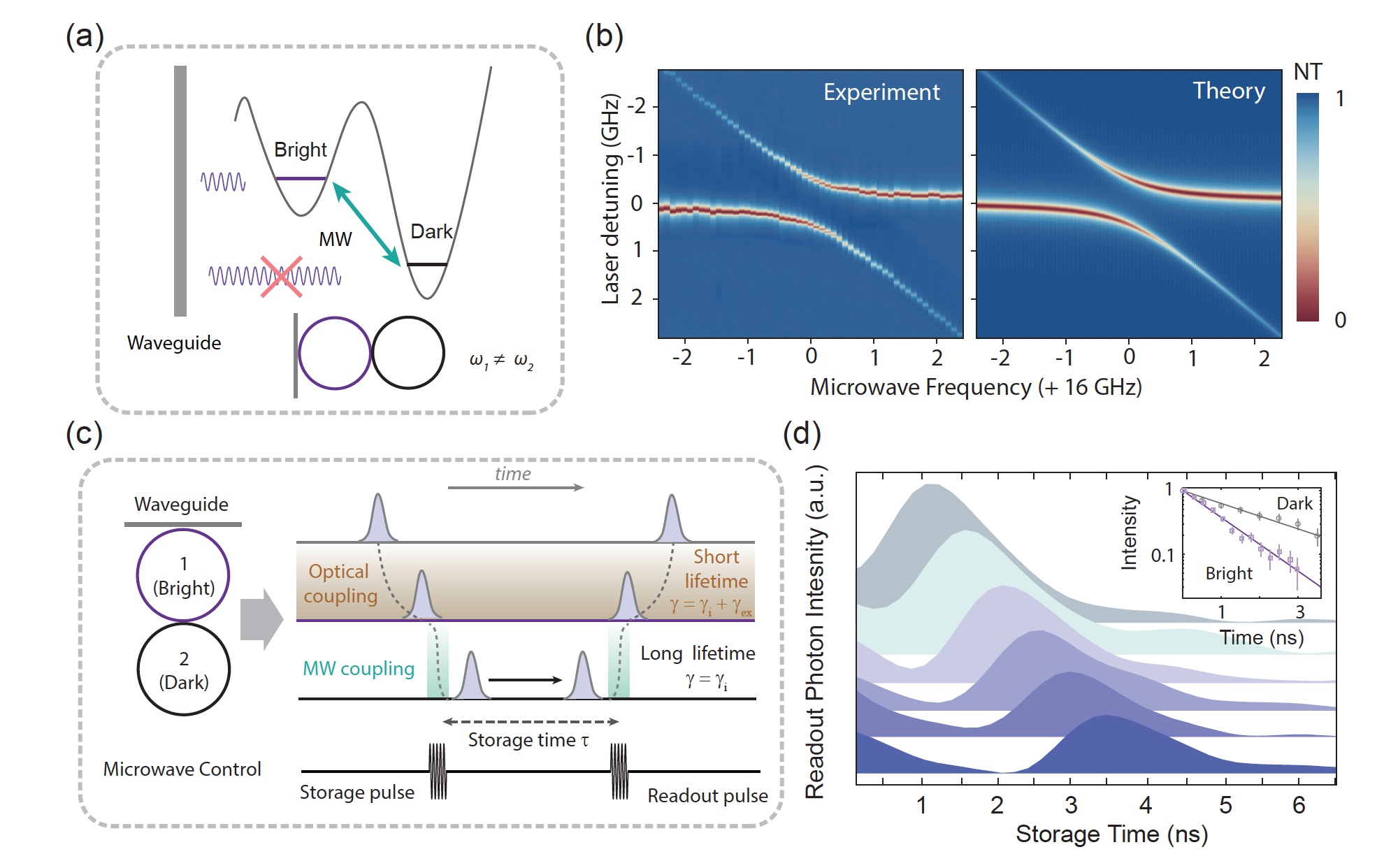"Photon in the microwave": the creation of a controlled photon two-level system

"Happiness can be found even in dark times, if you do not forget to turn to the light." These words said a fictional character, which is quite far from science. But in our world, scientists often turn to the light in search of their true happiness - new discoveries. And what, so to say, is the light? From photons. This elementary particle became the basis for many discoveries, technologies and research. But to this day, its properties are not completely known to anyone. But this does not prevent scientists to continue to use photons in their writings, practical or theoretical. Today we will get acquainted with the study of the photon system, which, according to scientists, will allow you to gain complete control over the energy and phase of the photons. For this, it is necessary to use the properties of atomic and molecular systems, where it is possible to control the state of electrons by means of an external electromagnetic field. How, why and why - we learn from the report of the researchers. Go.
The basis of the study
An important factor in the coherent electro-optical control of a photon two-level system is the photon lifetime, which in all energy states must be much longer than is required for a simple transition of the system from one state to another. In order to achieve this you need to use electro-optical methods of control. However, there are a number of difficulties. Large optical systems with optical amplifiers can imitate a classical two-level system, but the quantum coherence of photons is simply destroyed in the process. If we use the traditional integrated photon platforms, then they cannot provide simultaneously the long existence of the photon and fast modulation. Therefore, also not suitable for the purposes of scientists. But resonators based on silicon dioxide (SiO 2 ) or silicon nitride (Si 3 N 4 ) can be controlled exclusively electrically by means of a thermal effect. Electrically active photonic platforms based on silicon, graphene and various polymers provide fast electro-optical modulation. This is a clear advantage, but the life of photons in such systems is extremely small when compared with electrically passive platforms.
')
And, as often happens, when there is no existing worker and effective something, scientists create their own version. In this case, it is a photon two-level system that can be controlled by means of gigahertz microwave signals.
This system is a device with two micro-rings of lithium niobate (picture c ), the diameters of which are 80 microns. It is important to note that the distance between the rings is extremely small, as seen in the image of the scanning electron microscope ( a ).

Device snapshots
The image above b shows the cross section of the optical mode profile in a ring resonator. But d is a snapshot of the array of the above devices on a single chip.

Experimental setup
The device under test is optically pumped by a tunable telecommunications laser (wavelength 1630 nm). Light passing through an electro-optical modulator (EO Mod) and polarization controllers (PLC), enters the chip via a linsed fiber. The outgoing optical signal is sent via a fiber to a 12 GHz-tioned photodetector. After that, the converted electrical signal is sent to the oscilloscope. Microwave monitoring signals are generated by an AWG (arbitrary waveform generator), and then amplified and sent to the device. For direct current control, a T-shaped bias (Bias T) was used.
Due to low optical losses and co-integration of microwave electrodes, scientists managed to achieve a very impressive bandwidth -> 30 GHz, modulation efficiency - 0.5 GHz / V, and a photon lifetime of 2 ns.

Image number 1
The photon two-level system is implemented due to a pair of identical micro-ring optical resonators connected to each other (in image 1a this is ω1 = ω2). Such a bond forms a kind of photonic molecule with two energy levels: the symmetric mode (S) and the asymmetric mode (AS). And the microwave field interacts with the system through a strong Pockels effect * .
Pockels effect * - the appearance of double refraction of light when exposed to a constant or alternating electric field.Confirmation of the two energy levels is the measurement of optical transmission ( 1c graph).
The optical modes themselves are divided as follows: 2μ = 2π x 7 GHz. And the spectral line of the resonator for each is γ = 2π x 96 MHz, which corresponds to the quality level Q = 1.9 x 10 6 . These indicators once again confirm the stability of the resulting photon two-level system.
The main tool for controlling the system is a coherent microwave field with a continuous wave. Scientists point out that such a “format” of control is similar to atomic two-level systems. But there is an important difference: in the photon system, each of the two levels can fill more than 1 photon.
When the microwave frequency coincides with the energy difference of the two levels, a stable connection arises between the two modes (S and AS), which were originally separate. This leads to the splitting of energy levels, which is otherwise called the Outler-Townes effect (image 2a ).

Image number 2
In the system under test, it is possible to control the amplitude of microwave signals, which makes it possible to set the splitting frequency at a level of several gigahertz ( 2b ). If the microwave frequency is very upset by the transition frequency, a dispersion effect appears, comparable to the variable Stark effect in atomic systems ( 2c ). This effect allows you to control the degree of bond strength between the energy levels of the photon molecule being tested.

Image number 3
In the upper two images, the coherent spectral dynamics of the photon molecule is shown, more precisely, the measurements of the Rabi oscillations with different microwave effects on the system: 3a - the data obtained experimentally, and 3b - the theoretical data. Data analysis shows that there is control over a fairly wide range of Rabi frequencies.
Graph 3c shows the Rabi oscillation at a microwave effect of 1.1 V with a frequency of 1.1 GHz, which corresponds to the real axis of the Bloch sphere. In turn, the 3d graph shows the osillatory signals on the photodetector, which are a consequence of Ramsey interference.
And now we come to the final, but far from the last in importance, dimensions.
In the experiment, the scientists decided to apply unitary frequency conversion to perform a very important task of any optical signal processing process - storing and extracting photons on demand.
Scientists note that using a static resonator can slow down the process of photon propagation, but this slowdown is limited by the frequencies of the resonator, therefore they cannot be controlled.
But the use of a dynamically modulated resonator does not have such disadvantages. In order to gain control over the recording of photons on the resonator and the reading of photons from an external waveguide, it is necessary to change the optical coupling power before the expiration of the photon's lifetime in the resonator.

Image number 4
To achieve this, a 15 V dc bias was applied, which allowed the photon molecule to be reformatted into a pair of “dark” and “light” modes. Bright fashion is located in the first ring ( 4a ). Since it still has access to the input optical waveguide, it is referred to as optically light. The dark mode is located in the second ring and is not connected with the waveguide, therefore it is called optically dark. However, access to the dark mode can be obtained by applying microwave radiation with a frequency that coincides with the difference between the two optical modes. This process leads to the formation of a stable connection between these modes (graphs in 4b ).
The use of a microwave signal in a light mode allows you to convert it into a dark one ( 4c ). When the microwave signal is turned off, the photons remain in the dark mode, so they are separated from the waveguide. After analyzing the intensity of the received optical pulses in a dark mode, it turned out to establish its lifetime - 2 nanoseconds, which is 2 times longer. than the bright fashion ( 4d ).
For a detailed introduction to the study I recommend to look into the report of scientists.
Epilogue
According to scientists, this study can be a useful tool in further studying the properties of photons and methods for their application in future data transmission and storage technologies.
Such manipulations with photons are still difficult to implement, although they have great potential. This method of controlled photon two-level (and in the future and multi-level, according to the researchers) the system can be applied in completely new photon calculations, quantum computers and topological photonics.
Despite all the difficulties, scientists continue to dream of high technologies and do everything to make these dreams become a reality. After all, nothing is perfect in this world, and therefore there is much that can and should be improved.
Thank you for staying with us. Do you like our articles? Want to see more interesting materials? Support us by placing an order or recommending to friends, 30% discount for Habr users on a unique analogue of the entry-level servers that we invented for you: The whole truth about VPS (KVM) E5-2650 v4 (6 Cores) 10GB DDR4 240GB SSD 1Gbps from $ 20 or how to share the server? (Options are available with RAID1 and RAID10, up to 24 cores and up to 40GB DDR4).
VPS (KVM) E5-2650 v4 (6 Cores) 10GB DDR4 240GB SSD 1Gbps until December for free if you pay for a period of six months, you can order here .
Dell R730xd 2 times cheaper? Only we have 2 x Intel Dodeca-Core Xeon E5-2650v4 128GB DDR4 6x480GB SSD 1Gbps 100 TV from $ 249 in the Netherlands and the USA! Read about How to build an infrastructure building. class c using servers Dell R730xd E5-2650 v4 worth 9000 euros for a penny?
Source: https://habr.com/ru/post/425443/
All Articles